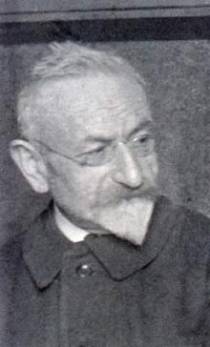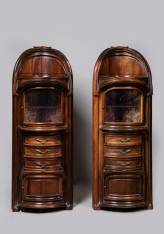VALLIN Eugène
VALLIN Eugène
French architect and cabinetmaker, Eugène Vallin studied at the Ecole des Beaux-Arts in Nancy. He did his apprenticeship in his uncle's carpentry shop, which he took over in 1881. He worked mainly on church furniture until the late 1890s. This is the main part of what he exhibited at the 1894 Lorraine Decorative Art Exhibition, in the form of photographs taken by the Royer company. Charles André convinced him to exhibit a staff ceiling with a coffered structure decorated with a lattice and vine leaves, which was very well received at the exhibition and which Eugène Vallin then installed in his dining room.
He carried out numerous renovations in Nancy's public institutions under the direction of Charles André: decoration of the Nancy courthouse, renewal of the decorations of the Salle des Pas Perdus and the marriage hall of the Nancy town hall, reconstruction of the Meurthe-et-Moselle prefecture hotel2. These productions are clearly influenced by the style of Emile Gallé, particularly in their naturalistic influences2.
In 1894, he applied to build a military monument in Remiremont, but his two proposals were not accepted. However, in 1896 he participated in the construction of the monument on the Place Carnot and in the construction of the mausoleum of Captain Krug in 1897.
He realized the door of the new workshops of Emile Gallé. But it is in furniture that he becomes famous for his production to order: he creates dining rooms, living rooms for the notables of Nancy: Eugène J.B. Corbin, Masson, Bergeret, Kronberg...
In 1895, he built a new studio and his house on Boulevard Lobau in Nancy, which became the first Art Nouveau building in the city with the help of Georges Biet. In return, he helped him with his villa at 22, rue de la Commanderie.
In 1901, he became vice-president of the steering committee of the Alliance provinciale des industries d'art, which became the École de Nancy.
In 1909, he designed the pavilion that housed the École de Nancy at the International Exhibition of Eastern France held in Nancy.
In architecture, he was one of the pioneers of steel concrete construction, a method he used for the construction of the École de Nancy pavilion at the International Exhibition of Eastern France.


